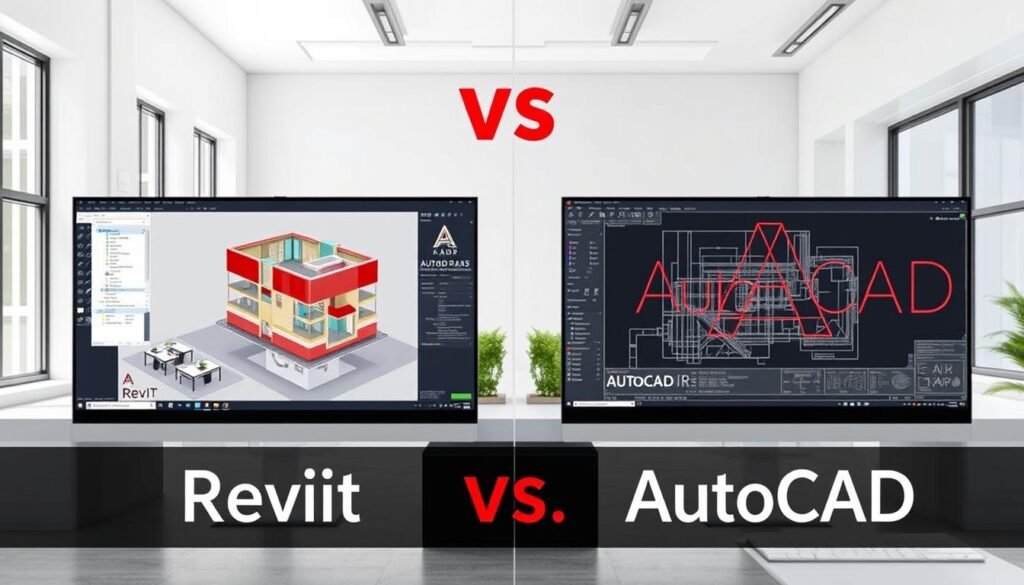Get expert Revit mentoring and Training for Architecture Offices
Investing in Revit training for your team is just the first step. Without ongoing support, the initial investment can quickly lose value. Every hour your staff struggles with Revit costs you more than you think.
The lack of continuous BIM skills coaching can lead to decreased productivity and increased frustration among team members. This not only affects the quality of work but also impacts the overall project timeline.
It’s crucial to recognize the importance of post-training support in maximizing the return on investment. By providing the necessary resources and guidance, you can ensure that your team continues to grow and thrive.
Key Takeaways
- Ongoing support is crucial after Revit training.
- Lack of support leads to decreased productivity.
- Continuous BIM skills coaching improves work quality.
- Post-training support maximizes ROI.
- Investing in support resources is essential.
The Critical Gap Between Revit Training and Implementation Success
Many organizations overlook the critical gap between Revit training and its effective implementation. The initial training phase is just the beginning; the real challenge lies in ensuring that the skills learned are successfully applied to projects.
Why Initial Training Alone Fails to Deliver ROI
Initial Revit training provides a foundation, but without ongoing support, teams often struggle to apply their new skills effectively. This can lead to a significant decline in the return on investment (ROI) expected from the training.
The Vulnerable Period: First 90 Days After Training
The first 90 days after training are crucial. It’s a period where teams are most vulnerable to challenges without proper support.
Common Challenges Teams Face Without Support
- Difficulty in applying Revit tools to complex project elements
- Troubleshooting issues that slow down project progress
- Lack of confidence in using advanced Revit features
How Skills Deteriorate Without Reinforcement
Without continuous reinforcement, Revit skills can deteriorate rapidly. BIM skills coaching and Revit project guidance are essential to maintain proficiency.
| Challenge | Impact Without Support | Benefit with Support |
|---|---|---|
| Applying Revit to Complex Projects | Significant delays | Efficient project completion |
| Troubleshooting | Increased frustration and time waste | Quick resolution and reduced stress |

Quantifying the Financial Impact of Inadequate Revit Support
Quantifying the financial impact of inadequate Revit support reveals a complex picture of lost productivity, rework expenses, and project delays. The true cost of insufficient support extends beyond immediate expenses, affecting a company’s long-term financial health.
Direct Costs That Impact Your Bottom Line
The direct costs associated with inadequate Revit support are tangible and directly impact a firm’s financial performance. Two significant areas where these costs manifest are productivity loss and rework expenses.
Productivity Loss in Hours and Dollars
When teams struggle with Revit due to lack of support, they spend more time troubleshooting and less time on billable work. This productivity loss translates into significant financial costs. For instance, a team of 10 members losing an average of 2 hours per week on Revit issues can result in a substantial loss when calculated over a year.
Rework Expenses and Error Correction
Inadequate Revit support often leads to errors and inconsistencies in project documentation. Correcting these errors requires rework, which is not only time-consuming but also costly. The financial impact of rework can be substantial, especially if it involves redoing work that was previously completed.

Hidden Indirect Costs That Executives Miss
Beyond the direct costs, there are several indirect costs associated with inadequate Revit support that can have a profound impact on a company’s financial health. These include project timeline extensions and opportunity costs of tied-up resources.
Project Timeline Extensions
Delays in project completion due to Revit-related issues can lead to extended timelines, resulting in additional costs. These costs can include prolonged rental of equipment, extended personnel costs, and potential penalties for late completion.
Opportunity Costs of Tied-Up Resources
When resources are tied up in projects that are delayed due to Revit issues, they cannot be allocated to new projects or opportunities. This represents a significant opportunity cost, as it can limit a firm’s ability to take on new work and grow their business.
| Cost Category | Description | Financial Impact |
|---|---|---|
| Productivity Loss | Time spent on troubleshooting Revit | $X per hour |
| Rework Expenses | Correcting errors due to Revit issues | $Y per project |
| Project Timeline Extensions | Delays in project completion | $Z per day |
Understanding and quantifying these costs is crucial for AEC firms to make informed decisions about their Revit support strategies. By investing in proper Revit support and BIM skills coaching, companies can mitigate these costs and improve their bottom line.
Productivity Decline: How Unsupported Teams Waste Billable Hours
AEC teams frequently encounter a productivity cliff after initial Revit training concludes. This decline is not just a minor setback; it can significantly impact the bottom line as billable hours are wasted on inefficient software usage.
The Efficiency Cliff After Initial Training
After the initial Revit training, teams often experience a sharp decline in efficiency. Without ongoing Revit project guidance, team members struggle to apply their new skills effectively in real-world projects. This struggle leads to a noticeable decrease in productivity.
Troubleshooting Time: The Invisible Productivity Drain
One of the most significant productivity drains is the time spent on troubleshooting Revit issues. Without expert guidance, teams can waste hours resolving problems that could be quickly solved with the right support.
Self-Help vs. Expert Guidance Time Comparison
Consider the difference between self-help and expert guidance. While self-help might seem cost-effective, it often leads to prolonged issue resolution times. Expert guidance, on the other hand, can drastically reduce the time spent on troubleshooting.
| Activity | Self-Help Time | Expert Guidance Time |
|---|---|---|
| Troubleshooting Revit Issues | 4-6 hours | 1-2 hours |
| Completing a Project Task | 8-10 hours | 4-6 hours |
The Multiplier Effect Across Team Members
The impact of inefficient Revit usage is not limited to individual team members; it has a multiplier effect across the entire team. When one member struggles, it can bottleneck the entire project workflow, affecting multiple team members and leading to significant delays.
“The right training and support can make all the difference in how effectively teams use Revit. It’s not just about completing the training; it’s about ongoing support and guidance.” – Industry Expert
By investing in BIM skills coaching and ongoing support, firms can mitigate the productivity decline and ensure that their teams continue to work efficiently with Revit. This not only saves billable hours but also enhances project delivery times and client satisfaction.
Project Delays That Damage Client Relationships and Reputation
When Revit training doesn’t translate to project success, the consequences can be severe. Project delays are a significant risk when teams lack adequate Revit support. These delays not only impact the project timeline but also damage client relationships and a company’s reputation.
Missing Critical Deadlines Due to Revit Workflow Issues
One of the primary causes of project delays is Revit workflow issues. When teams are not adequately supported, they struggle with Revit workflows, leading to missed deadlines and increased project costs. Effective BIM skills coaching can help mitigate these issues by ensuring that teams are proficient in using Revit to its full potential.
Client Confidence Erosion and Long-Term Business Impact
Project delays erode client confidence, potentially leading to lost business opportunities. The long-term impact of damaged client relationships can be significant, affecting a company’s ability to secure future projects. It’s essential to maintain client confidence through timely project delivery and effective communication.
Case Example: How Support Gaps Led to Lost Clients
A notable example of the consequences of inadequate Revit support is a firm that lost a significant client due to project delays. The delays were directly attributed to the team’s inability to effectively use Revit, resulting from a lack of post-training support. This loss not only impacted their revenue but also damaged their reputation in the industry.
Calculating the Lifetime Value of Damaged Relationships
The lifetime value of damaged client relationships can be substantial. To calculate this, companies must consider the potential revenue lost from the client and the potential long-term impact on their reputation. By investing in Revit support and BIM skills coaching, companies can mitigate these risks and ensure long-term success.
Design Quality Compromises When Teams Can’t Leverage Revit Effectively
Revit’s potential remains untapped when teams lack the necessary skills, resulting in subpar designs. The consequences of not being able to leverage Revit effectively are multifaceted, impacting not just the design phase but the entire project lifecycle.
Suboptimal Design Solutions Due to Software Limitations
When teams are not proficient in Revit, they often struggle to achieve optimal design solutions. This limitation can lead to inefficient use of building materials and suboptimal spatial planning. As a result, projects may not meet their intended sustainability or functionality goals.
Documentation Errors That Lead to Construction Problems
Inaccurate or incomplete documentation is a direct result of inadequate Revit skills. This can cause significant issues during the construction phase, including delays and cost overruns. Ensuring that teams are well-versed in Revit can mitigate these risks.
Coordination Issues Between Disciplines
One of the major challenges faced by teams with limited Revit proficiency is coordination between different disciplines. Architectural, structural, and MEP teams must work in harmony, and Revit is a crucial tool for achieving this. However, without proper training, coordination issues can arise, leading to clashes and rework.
Legal and Liability Concerns from Poor Documentation
Poor documentation can lead to legal and liability issues. Inaccurate drawings and specifications can result in contractual disputes and potential litigation. As noted by a industry expert, “The accuracy of construction documents is crucial in avoiding costly disputes and ensuring project success.”
“The construction industry is fraught with risks, and inaccurate documentation is one of the most significant risks that can be mitigated with proper training and support.”
Effective Revit project guidance is essential in avoiding these pitfalls. By investing in proper training and support, firms can ensure that their teams are equipped to deliver high-quality designs and documentation, ultimately leading to successful project outcomes.
The Human Cost: Employee Frustration, Burnout and Turnover
Inadequate support for Revit users can result in frustration, burnout, and ultimately, turnover. When employees struggle with Revit due to lack of Revit support, the human cost can be substantial.
Psychological Impact of Technology Struggles
The constant battle with technology can lead to significant psychological strain. Employees may feel undervalued and unsupported, leading to decreased job satisfaction.
BIM skills coaching can play a crucial role in mitigating this issue by providing employees with the guidance they need to effectively use Revit.
How Revit Challenges Drive Top Talent Away
Top performers are often the most affected by the lack of adequate support. Frustration with Revit can drive these skilled employees to seek opportunities elsewhere.
The Real Cost of Replacing BIM-Skilled Employees
Replacing BIM-skilled employees is not just about recruitment costs; it’s also about losing expertise and potentially delaying projects.
Survey Data: What Employees Say About Technology Support
Surveys have shown that employees value technology support highly. A lack of support is often cited as a major reason for dissatisfaction.
Investing in Revit support and BIM skills coaching is crucial for retaining top talent and ensuring project success.
Competitive Disadvantage in the AEC Marketplace
In the competitive AEC industry, firms that fail to support their teams after Revit training risk falling behind their competitors. The absence of robust Revit project guidance and BIM skills coaching can lead to a significant disadvantage in the market.
Falling Behind Firms with Mature BIM Implementation
Firms that have mature BIM implementation processes in place are better positioned to handle complex projects and client demands. “Companies that invest in comprehensive BIM training and support are more likely to deliver high-quality projects on time and within budget,” as noted by industry experts. This not only enhances their reputation but also gives them a competitive edge in securing new projects.
Lost Opportunities Due to Limited Revit Capabilities
Limited Revit capabilities can result in missed opportunities, particularly when it comes to meeting RFP requirements that demand advanced Revit skills.
RFP Requirements You Can’t Meet Without Advanced Revit Skills
Many RFPs now require firms to demonstrate advanced BIM capabilities, including complex modeling and data management. Without proper Revit support, firms may struggle to meet these requirements, losing potential projects to competitors.
How Competitors Leverage BIM for Marketing Advantage
Competitors who have mastered BIM implementation often use their capabilities as a marketing advantage, showcasing their expertise in promotional materials and client pitches. This strategic use of BIM can be a significant differentiator in a crowded marketplace.
To stay competitive, AEC firms must prioritize Revit project guidance and BIM skills coaching, ensuring their teams are equipped to handle the demands of modern projects and RFP requirements.
Effective Revit Support, BIM Skills Coaching, and Project Guidance: The Solution
The key to successful Revit implementation lies in providing ongoing support and guidance to teams. This support is crucial for maximizing the benefits of Revit training and ensuring that teams can effectively utilize the software.
Structured Post-Training Support Programs That Work
Structured post-training support programs are designed to help teams overcome the challenges they face after initial Revit training. These programs provide just-in-time learning and hands-on guidance, enabling teams to quickly resolve issues and stay on track with their projects.
Just-in-Time Learning Models for Maximum Retention
Just-in-time learning models focus on providing training and support exactly when teams need it. This approach enhances knowledge retention and helps teams apply their skills more effectively in real-world scenarios.
Technology Solutions for Immediate Remote Support
Technology plays a vital role in providing immediate remote support to teams. Tools such as cloud-based collaboration platforms and screen sharing software enable experts to assist teams in real-time, regardless of their location.
Cloud-Based Collaboration Tools
Cloud-based collaboration tools facilitate seamless communication and data sharing among team members. These tools are essential for ensuring that all stakeholders are aligned and working towards the same goals.
Screen Sharing and Virtual Assistance Platforms
Screen sharing and virtual assistance platforms allow experts to provide hands-on guidance and support remotely. This capability is particularly valuable for resolving complex Revit issues and ensuring that teams can work efficiently.
| Support Solution | Key Benefits |
|---|---|
| Structured Post-Training Support | Enhanced knowledge retention, improved productivity |
| Just-in-Time Learning | Real-time issue resolution, better skill application |
| Cloud-Based Collaboration Tools | Seamless communication, aligned teams |
| Screen Sharing and Virtual Assistance | Hands-on guidance, efficient issue resolution |
By implementing these support solutions, organizations can significantly enhance their Revit implementation success and maximize their return on investment.
Building a Sustainable Revit Support System for Long-Term Success
A well-structured Revit support system is the backbone of any successful BIM implementation, ensuring that teams can work efficiently and effectively. To achieve this, firms must consider several key factors that contribute to a sustainable support infrastructure.
Internal vs. External Support Resources: Making the Right Choice
One of the primary decisions firms face is whether to rely on internal or external support resources for their Revit needs. Internal support can be beneficial for maintaining company-specific knowledge and standards, while external support can provide access to a broader range of expertise and best practices through bim skills coaching. The right choice depends on the firm’s size, project complexity, and existing resources.
Creating a Knowledge Management System for Revit Best Practices
A robust knowledge management system is essential for capturing and disseminating Revit best practices across the organization. This involves:
- Developing documentation standards and templates that align with company protocols and project requirements.
- Creating problem-solution libraries and resources that teams can access for troubleshooting and guidance.
Documentation Standards and Templates
Standardizing documentation processes ensures consistency across projects and teams, making it easier to manage and maintain project data. This includes developing templates for common Revit tasks and ensuring that all team members are trained on these standards.
Problem-Solution Libraries and Resources
Maintaining a library of common issues and their solutions can significantly reduce downtime and improve productivity. This resource should be regularly updated with new solutions and best practices, potentially with the guidance of revit project guidance experts.
Measuring Support Effectiveness Through Key Metrics
To ensure the support system is working effectively, firms must establish key metrics to measure its performance. This could include tracking resolution times for support requests, user satisfaction ratings, and the impact on project timelines and budgets. By regularly assessing these metrics, firms can identify areas for improvement and make informed decisions about their support infrastructure.
The Business Case: Calculating ROI on Post-Training Revit Support
Calculating the ROI on post-training Revit support is crucial for AEC firms looking to optimize their BIM implementation. To make a strong business case, firms must understand both the investment required for comprehensive support and the potential returns.
Investment vs. Return Analysis Framework
To analyze the ROI, firms should consider the costs associated with post-training Revit support, including the expenses for additional training, support staff, and software. The returns can be measured in terms of increased productivity, reduced errors, and improved project delivery times.
Key metrics to consider:
- Productivity gains
- Error reduction
- Project delivery time improvements
Success Stories: Organizations That Transformed Through Proper Support
Several organizations have seen significant benefits from investing in post-training Revit support. For instance, a leading architecture firm improved productivity by 30% after implementing a comprehensive support program.
Case Study: Architecture Firm Productivity Gains
This architecture firm invested in BIM skills coaching and saw a substantial increase in productivity. The support program included regular training sessions and on-demand assistance, leading to improved project delivery times.
An engineering team reduced errors by 25% after receiving post-training Revit support. The support included just-in-time learning models and remote assistance, resulting in improved design quality and reduced rework.
Conclusion: Transforming Your Revit Investment into Sustainable Competitive Advantage
Organizations that invest in Revit training without proper support risk wasting their investment. The lack of revit project guidance can lead to decreased productivity, project delays, and compromised design quality. To achieve a sustainable competitive advantage, firms must prioritize post-training support.
By implementing structured support programs, organizations can maximize their return on investment. This includes just-in-time learning models and technology solutions for immediate remote support. Effective Revit support enables teams to work efficiently, deliver high-quality projects, and drive business growth.
Firms that adopt a comprehensive Revit support system can differentiate themselves in the AEC marketplace. By leveraging revit project guidance, organizations can improve their BIM implementation, enhance collaboration, and increase client satisfaction. This, in turn, drives long-term success and a strong market reputation.

